TSMC 2025 Technology Symposium: SK hynix Showcases HBM4 to Highlight AI Memory
12-layer HBM4 is next-gen HBM capable of processing over 2TB/s
This is a Press Release edited by StorageNewsletter.com on May 5, 2025 at 2:00 pmAt TSMC 2025 North America Technology Symposium (Santa Clara, CA on April 23), SK hynix, Inc. showcased groundbreaking memory solutions including HBM4. (1)
The TSMC North America Technology Symposium is an annual event in which TSMC (Taiwan Semiconductor Manufacturing Company) shares its latest technologies and products with global partners. This year, SK hynix participated under the slogan Memory, Powering AI and Tomorrow, highlighting its technological leadership in AI memory through exhibition zones including HBM Solutions and AI/Data Center Solutions.
SK hynix’s 12-layer HBM4 and 16-layer HBM3E on display alongside NVIDIA’s B100 GPU
Click to enlarge
In the HBM Solution section, the company presented samples of its 12-layer HBM4 and 16-layer HBM3E products. The 12-layer HBM4 is a next-gen HBM capable of processing over 2TB/s. In March, the firm announced it has become the 1st in the world to supply HBM4 samples to major customers and plans to complete preparations for mass production within the 2nd half of 2025.
The B100, NVIDIA’s latest Blackwell GPU equipped with the 8-layer HBM3E, was also exhibited in the section along with 3D models of key HBM technologies such as TSV (2) and Advanced MR-MUF (3), drawing significant attention from visitors.
DDR5 RDIMM and MRDIMM products on display, including those based on 1c node
In the AI/Data Center Solutions section, SK hynix displayed its lineup of server memory modules, including RDIMM (4) and MRDIMM (5) products. The section featured various high-performance server modules based on DDR5 DRAM built using the 1c node, (6) the 6th Gen of the 10nm process technology.
Notably, the company exhibited a range of modules designed to enhance AI and data center performance while reducing power consumption. These included the MRDIMM lineup with a speed of 12.8Gb and capacities of 64, 96, and 256GB; RDIMM modules with a speed of 8Gb in 64 and 96GB capacities; and a 256GB 3DS (7) RDIMM.
At the TSMC 2025 North America Technology Symposium, SK hynix’s next-gen solutions such as HBM4 drew great attention from industry officials. By successfully mass-producing its HBM lineup through continued technological collaboration with partners such as TSMC, the company aims to expand the AI memory ecosystem and further solidify its industry leadership.
(1) High Bandwidth Memory (HBM): A high-value, high-performance product that vertically stacks multiple DRAM chips to dramatically enhance data processing speed compared to conventional DRAM. There are six generations of HBM, starting with the original HBM followed by HBM2, HBM2E, HBM3, HBM3E and HBM4.
(2) Through-Silicon Via (TSV): A technology to connect the upper and lower layers of DRAM chips by creating thousands of microscopic holes in each of the chip layers and running vertical electrodes through those openings.
(3) Advanced MR-MUF: A next-gen MR-MUF technology that incorporates warpage control, allowing chips which are 40% thinner than conventional chips to be stacked without warping. Additionally, the use of a new protective material improves heat dissipation.
(4) Registered Dual In-line Memory Module (RDIMM): A server memory module product in which multiple DRAM chips are mounted on a substrate.
(5) Multiplexer Combined Ranks Dual In-line Memory Module (MRDIMM): A server memory module product in which multiple DRAM chips are mounted on a substrate. Speed is enhanced by operating 2 ranks – the basic operating units of the module – simultaneously.
(6) Previous-gen of the 10nm DRAM process have been named using number-letter designations in the order of 1x, 1y, 1z, 1a and 1b. In August 2024, SK hynix became the first in the world to successfully develop the 6th Gen of the process, named 1c.
(7) 3D Stacked Memory (3DS): A high-bandwidth memory product in which 2 or more DRAM chips are packaged together and interconnected using TSV technology.






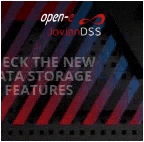

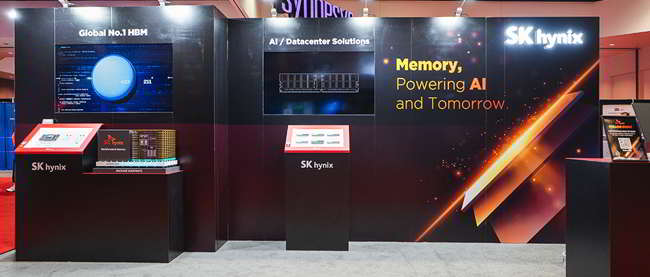
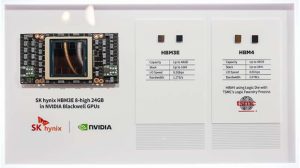
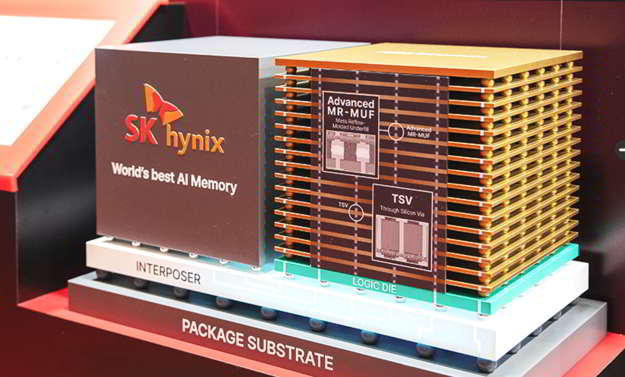
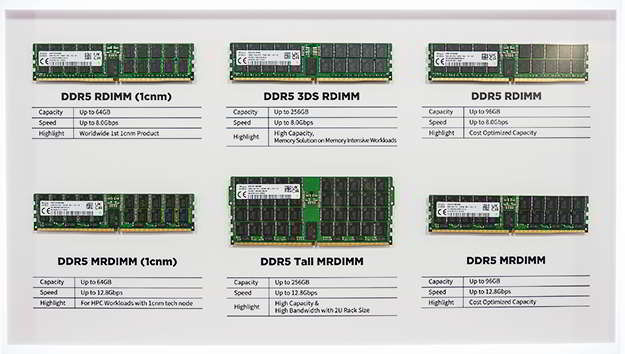






 Subscribe to our free daily newsletter
Subscribe to our free daily newsletter


